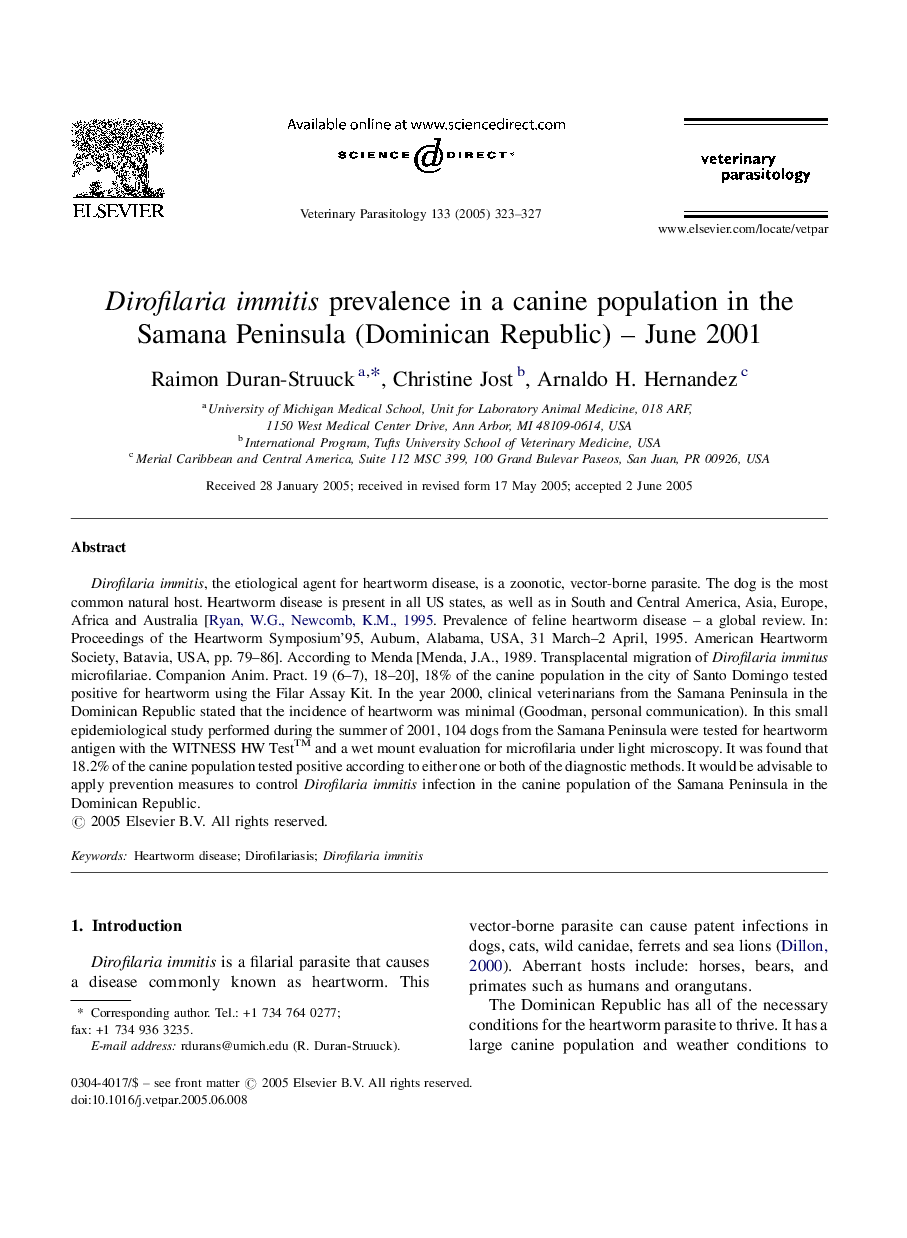| Article ID | Journal | Published Year | Pages | File Type |
|---|---|---|---|---|
| 8991053 | Veterinary Parasitology | 2005 | 5 Pages |
Abstract
Dirofilaria immitis, the etiological agent for heartworm disease, is a zoonotic, vector-borne parasite. The dog is the most common natural host. Heartworm disease is present in all US states, as well as in South and Central America, Asia, Europe, Africa and Australia [Ryan, W.G., Newcomb, K.M., 1995. Prevalence of feline heartworm disease - a global review. In: Proceedings of the Heartworm Symposium'95, Auburn, Alabama, USA, 31 March-2 April, 1995. American Heartworm Society, Batavia, USA, pp. 79-86]. According to Menda [Menda, J.A., 1989. Transplacental migration of Dirofilaria immitus microfilariae. Companion Anim. Pract. 19 (6-7), 18-20], 18% of the canine population in the city of Santo Domingo tested positive for heartworm using the Filar Assay Kit. In the year 2000, clinical veterinarians from the Samana Peninsula in the Dominican Republic stated that the incidence of heartworm was minimal (Goodman, personal communication). In this small epidemiological study performed during the summer of 2001, 104 dogs from the Samana Peninsula were tested for heartworm antigen with the WITNESS HW Test⢠and a wet mount evaluation for microfilaria under light microscopy. It was found that 18.2% of the canine population tested positive according to either one or both of the diagnostic methods. It would be advisable to apply prevention measures to control Dirofilaria immitis infection in the canine population of the Samana Peninsula in the Dominican Republic.
Related Topics
Life Sciences
Agricultural and Biological Sciences
Animal Science and Zoology
Authors
Raimon Duran-Struuck, Christine Jost, Arnaldo H. Hernandez,
